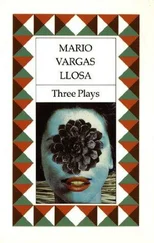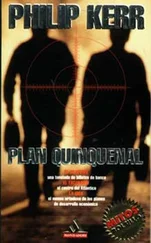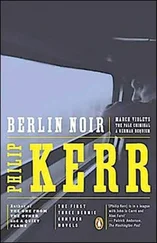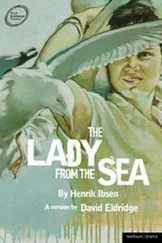“Gormann’s uncle was an amateur cinematographer and when he died in 1920, he left his nephew his film studio and camera equipment in Lichterfelde. Gormann knew nothing at all about filmmaking but he was interested enough to take some night classes in the craft, and before very long he was making short, silent films. Having cut his teeth filming and editing harmless little movies, Gormann now turned his attention to his real interest, which was making erotic films. To this end, in 1921, Gormann placed an advertisement in the Berliner Morgenpost inviting aspiring models to tea at the Café Palmenhaus on Hardenbergstrasse.
“His first applicant was Amalie Ziethen, aged twenty-five, recently arrived in Berlin from Cottbus; she had a good job at Treu and Nuglisch’s perfume shop on Werderstrasse and was considered an excellent employee. But like a lot of young women of her age, she entertained ambitions of becoming a film actress. Gormann appeared to be benign, even avuncular, and explained that studios like UFA-Babelsberg were looking for girls all the time but because the competition was so intense, it was necessary that she arrange her own screen test. He explained that this same screen test should attempt to answer as many questions as possible, including what a girl looked like naked and when she was enjoying ecstasy. Cleverly, he added that this was why he always met girls at the café, instead of at the studio, so they would feel no pressure and had time to properly think things over. Amalie didn’t really need to think twice about what Gormann was proposing. She’d wanted to be in pictures all her life and had already done some nude modeling for a couple of magazines, including the cover of a naked culture magazine called Die Schönheit .
“She and Gormann left the café in Gormann’s car and drove to Lichterfelde, where, after appearing in Gormann’s pornographic film, she was strangled with a length of electrician’s wire. The body was subsequently dumped in the Grunewald Forest, not very far north from where we are now. If this was all that had happened to poor Fräulein Ziethen that would have been bad enough. It was only much later on, after we had finally arrested Gormann, that a viewing of his film collection revealed just what agonies Amalie and several other girls had endured before Gormann took their lives. Suffice it to say that he was a modern Torquemada.
“As is typical of the lust murderer, with each girl the script was horribly the same; Gormann would film her in the studio at Lichterfelde until she had gone as far as her own sense of modesty allowed, at which point he would drug her and then subject her to a pedal-operated sex machine which he had manufactured especially for him in Dresden. Then he would torture the girl for some hours, before finally having sex with her, and it was during the very act of intercourse that finally he strangled her with a ligature made of Kuhlo wire. He even devised an ingenious clockwork device to enable him to crank the camera and which allowed him to appear in front of the lens so that he could film himself in the very act of committing murder — a device which he later patented and sold to a German movie company.
“At least nine girls disappeared in this way between 1921 and 1923, and their strangled bodies were found dumped in sites as far afield as Treptow and Falkensee. The Murder Commission knew that all the dead girls shared one thing in common: they were all strangled with Kuhlo wire, which was why at the Police Praesidium on Alexanderplatz, for a long time these murders were known as the Kuhlo killings.
“Several good detectives — Tegtmeyer, Ernst Gennat, Nasse, Trettin — all tried to solve the Kuhlo killings. Without putting too many details before the public, the Murder Commission sought to enlist the huge public interest there was in this case. On one celebrated occasion a couple of Berlin furniture shops — Gebruder-Bauer on Bellevuestrasse, and J. C. Pfaff on Kurfürstendamm — each donated a window where various exhibits from the murders could be displayed in the hope that a member of the public might recognize them: clothes, a length of curtain material one of the bodies had been wrapped in, the wire used to strangle the girls, and photographs of the places where the bodies had been found. But the displays caused huge crowds to collect in front of the windows and the police were obliged to intervene with the result that the shop owners requested that the articles be removed, as they were interfering with their businesses. Other appeals for information were no more successful. Detectives were even invited from Scotland Yard in England and from the Sûreté in Paris to help, all to no avail.
“Meanwhile the particular batch of wire used to strangle the girls was tracked down to UFA film studios, Babelsberg; this and the fact that two of the murdered girls had told friends they were going to meet a Rudolf Meinert for a casting session caused the Murder Commission to focus for a time on the film industry. In order to meet some of his victims, Gormann had used this name, knowing that there was a real Rudolf Meinert who was head of production at UFA. Meinert was in fact interviewed by detectives several times. As were other producers and directors at UFA film studios. After a while, anyone who had anything to do with German cinema was interviewed. Detectives even saw Gormann’s advertisement in the newspaper and spoke to him; but he seemed like no one’s idea of a suspect in a murder case. He was a church elder; a man who had won the Iron Cross and been wounded during the war; he even gave money to the Prussian Police Benevolent Fund.
“Gormann also showed detectives some of the movies he had made — innocuous casting films that were a million kilometers away from the kind of film he preferred to make; and he directed detectives to some of the girls he had filmed who testified to his kindness and generosity. Those girls he hadn’t strangled, that is. But what no one thought to check was Gormann’s relationship with the film studio; there was no relationship. As far as the studio was concerned, Gormann was just another supplicant in a long line of supplicants that were, more often than not, ignored.
“Then, in 1923, even as Gormann was being rejected as a suspect, the murders stopped completely. At least, those murders that bore Gormann’s trademarks. Any detective will tell you that the most terrible thing about investigating a series of lust murders is that the murderer stops killing before he is caught. It’s the most appalling feeling on earth to find yourself wishing another murder will be committed in the hope that it might yield up the one vital clue that will crack the case. It’s moral paradoxes like this that make the job so difficult sometimes and which cause homicide detectives many sleepless nights. In circumstances like these I’ve even known detectives to blame themselves for a victim’s death. As paradoxes go, to desire a death in the hope that you might save a life is about as acute a dilemma as you’ll find outside of wartime. It’s no good telling a cop how the philosopher Kant argues that to act in the morally right way people must act from duty. Or — again, according to Kant — that it is not the consequences of actions that make them right or wrong but the motives of the person who carries out the action. Most cops I’ve ever met couldn’t even spell ‘categorical imperative.’ And I know I myself fall short of his morally absolute standard every day I go to work.
“But back to Fritz Gormann. When the Kuhlo killings case came my way in 1928, I took the files home with me and spent several nights reading them through in their entirety. And then I read them again. You see, it’s almost invariably the case that when eventually you make an arrest, the evidence was staring you in the face all along; and with this in mind, sometimes the best thing you can do is to arrange a review of all the available evidence in the hope that you may see something that wasn’t seen the first time. You see, a cold case is nothing but all of the false and misleading evidence that, over a period of years, has come to be accepted as true. In other words, you start by patiently challenging almost everything you think you know; even the identity of the victims.
Читать дальше












